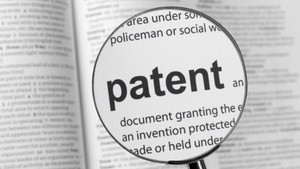The past year has once again been a busy one for the biosimilars industry [1]. The most important milestone achieved during 2015 was the landmark decision made by the US Food and Drug Administration (FDA) on 6 March 2015 to approve Sandoz’s filgrastim biosimilar, Zarxio (filgrastim-sndz), for all five indications of the originator product (Neupogen). FDA is also reviewing applications for epoetin alfa, infliximab, etanercept filgrastim and pegfilgrastim biosimilars.
What happened in biosimilars during 2015
Biosimilars/General
|
Posted 22/01/2016
 0
Post your comment
0
Post your comment

In Europe, the European Medicines Agency’s (EMA) Committee for Medicinal Products for Human Use (CHMP) recommended approval of Benepali (SB4) in November 2015. The agency is currently reviewing biosimilar applications for enoxaparin sodium, etanercept, infliximab, pegfilgrastim and rituximab.
The rest of the world is also catching up with Europe, with biosimilar approvals in Australia, Canada, Korea and Japan. Meanwhile, non-originator biologicals were also approved in Brazil, India, Iran, Russia and Venezuela.
India’s drug regulator, the Drugs Controller General of India (DCGI) has granted marketing approval for an etanercept ‘similar biologic’ Intacept, two rituximab ‘similar biologics’, Maball and one from Reliance Life Sciences, and a ranibizumab ‘similar biologic’ Razumab during 2015.
Biosimilars naming
The contentious issue of how to name biosimilars was again a hot topic for discussion during 2015. According to the World Health Organization, almost half of comments on its proposed biological qualifier (BQ) for naming biologicals were positive. The Generic Pharmaceutical Association (GPhA), however, argued that ‘INN [International Nonproprietary Name] naming has been simple and intuitive and this should not be changed’, stating that the brand name is the distinguishing factor.
FDA has also proposed that all biologicals and biosimilars have non-proprietary names and that a four-letter suffix be added to the names to distinguish them from each other.
US state legislation on biosimilars
In January 2015, biologicals companies, including Amgen, Actavis, Sandoz, Hospira and Genentech, and the GPhA agreed to support compromise automatic substitution legislation that would allow interchangeable biologicals to be automatically substituted at the pharmacy. The compromise language requires the dispensing pharmacist to ‘communicate to the prescriber the specific product provided to the patient, including the name of the product and the manufacturer’ ‘within a reasonable time’.
The latest states to consider or pass legislation allowing substitution of a biosimilar for an originator biological include California, Colorado, Georgia, Idaho, Illinois, Maryland, Massachusetts, New Jersey, North Carolina, Tennessee, Texas, Utah and Washington.
Biosimilars guidelines
FDA issued four final biosimilars guidance documents in 2015. EMA released its finalized guideline on the non-clinical and clinical development of insulin biosimilars in March 2015. The Therapeutic Goods Administration (TGA), Australia’s regulatory body for therapeutic goods, announced on 10 April 2015 that it was carrying out public consultations on the adoption of two European Union (EU) guidelines (the overarching biosimilars guideline and the guideline on non-clinical and clinical issues) in Australia.
The Finnish Medicines Agency (Fimea) announced in May 2015 that it was recommending the interchangeability of biosimilars for their reference biologicals. The Fimea recommendation does not, however, recommend automatic substitution at the pharmacy level.
Clinical trials for biosimilars
2015 has also seen the results of many clinical trials being published or presented at scientific conferences, as well as many new trials for candidate biosimilars being started.
Extrapolation
Extrapolation of indications has been a topic of interest during 2015, with EMA defending its decision to extrapolate indications for biosimilars under certain conditions and backing this up with evidence from post-marketing studies. Despite this assurance by the European regulator, some medical societies are still specifically recommending not to use biosimilars in extrapolated indications.
The future
With the number of clinical trials being carried out for biosimilars in 2015, biosimilar approvals, the first FDA approval and the growing number of biosimilar applications in the US, the future looks bright for 2016 in the biosimilars market.
Nevertheless, use of biosimilars in Europe still varies widely between countries and therapy areas. This highlights the need for continuing education of patients, prescribers and healthcare payers.
Editor’s comment
It should be noted that ‘non-originator biologicals’ approved outside of Europe might not have been authorized following as strict a regulatory process as is required for approval of biosimilars in the European Union. The EMA (European Medicines Agency) regulatory requirements ensure the same high standards of quality, safety and efficacy for biosimilars as for originator biologicals, and also include a rigorous comparability exercise with the reference product.
This article for GaBI Online is a summary of the full article published in GaBI Journal.
If you would like to receive a copy of the GaBI Journal article, please send us an email.
Readers interested in contributing a research or perspective paper to GaBI Journal– an independent, peer reviewed academic journal – please send us your submission here.
Related article
What happened in biosimilars during 2014
Reference
1. Top developments in biosimilars during 2015. Generics and Biosimilars Initiative Journal (GaBI Journal). 2016;5(1):42-4. doi:10.5639/gabij.2016.0501.010
Permission granted to reproduce for personal and non-commercial use only. All other reproduction, copy or reprinting of all or part of any ‘Content’ found on this website is strictly prohibited without the prior consent of the publisher. Contact the publisher to obtain permission before redistributing.
Copyright – Unless otherwise stated all contents of this website are © 2016 Pro Pharma Communications International. All Rights Reserved.
Research
Reaching ESG goals in pharmaceutical development
What is the future for the US biosimilar interchangeability designation
Most viewed articles
The best selling biotechnology drugs of 2008: the next biosimilars targets
Global biosimilars guideline development – EGA’s perspective
Related content
Samsung Bioepis wins Pyzchiva case; Regeneron patent rulings threaten foreign biosimilars
Chinese biosimilars go global: growth, partnerships, and challenges
Stelara biosimilars enter US market with 85% discount in 2025
IFPMA publishes position on pharmacy-mediated substitution for biosimilars
Samsung Bioepis wins Pyzchiva case; Regeneron patent rulings threaten foreign biosimilars

Biosimilars/General Posted 30/07/2025
Chinese biosimilars go global: growth, partnerships, and challenges

Biosimilars/General Posted 30/04/2025
IFPMA publishes position on pharmacy-mediated substitution for biosimilars

Biosimilars/General Posted 21/03/2025
The best selling biotechnology drugs of 2008: the next biosimilars targets







Post your comment